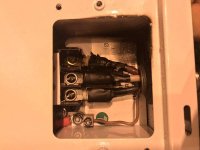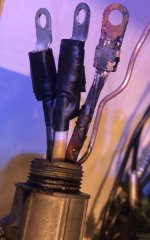Ok, you win. You're right and everyone else is wrong. There ya go. You showed 'em.
Before we put this puppy to bed....
There's just one thing I'd like to point out to you. The example you gave... https://www.saferproducts.gov/ViewIncident/1377268
That's a plastic box being deemed unsafe.
You obviously didn't read the details on the two main issues;
The safety and fire hazards associated with these light controllers fall into two categories; the first being the "Universal" receptacles used in these units. These receptacles will allow a cord cap (attachment plug) rated at either 120 or 240 Volt to be connected to the controller output. When the light controllers are connected to a 240 volt circuit all of the receptacles are supplied with that voltage. A 120 volt appliance plugged into the 240 volt circuit such as a fan, humidifier or other small appliance associated with the growing activity will overheat rapidly and fire may follow. The National Electrical Manufacturers Association (NEMA) has very specific configurations for receptacles due to the hazards; these" Universal" receptacles aren't a listed item. See attached NEMA Charts.
The second hazard associated with these units concerns the amperage available at the 1S or 20 Amp receptacles. These units are called out for connection to a 30, 40, or 5O Amp circuit, there is no overcurrent device (fuse or circuit breaker) installed between the 5O Amp supply and the 15 or 20 amp receptacle. Without this protection an appliance such as a light ballast or other load could develop a short or overload and the current would continue to flow until it exceeded 5O amps and tripped the breaker supplying it or the wiring overheated, melted and burned open. The conductors used in the controller from the receptacles to the contactor aren't marked properly; there are no provisions for terminating the neutral conductor. If the controllers are used in dwelling units which all have been found in, they need to meet the requirements for arc-fault and tamper resistant receptacles.
As these units are currently being sold and installed, they violate the following sections of the 2010 California Electrical Code.
Section 200.6 (A) Means of Identifying Grounded Conductors. An insulated grounded conductor of 6AWG or smaller shall be identified by a continuous white or gray outer finish or by three continuous white stripes on other than green insulation along its entire length.
Section 210.S (A) Grounded Conductor. The grounded conductor of a branch circuit shall be identified in accordance with 200.6.
Section 210.12 (B) Dwelling Units. All120-volt single phase 15- and 20-ampere branch circuits supplying outlets installed in dwelling unit family rooms, dining rooms, living rooms, parlors, libraries, dens, bedrooms, sunrooms, recreation rooms, closets, hallways, or similar rooms or areas shall be protected by a listed arc-fault circuit interrupter, combination-type, installed to provide protection of the branch circuit.
Table 210.21 (B) (3) Receptacle Ratings for Various size Circuits
Circuit Rating (Amperes) Receptacle Rating (Amperes)
15 Not over 15
20 15 or 20
Section 240.3 (D) Small conductors.
(3) 14 AWG Copper 15 Amperes
(4) 12 AWG Copper 20 Amperes
Section 240.4 Protection of Conductors. Conductors other than flexible cords, flexible cables, and fixture wires, shall be protected against overcurrent in accordance with their ampacities specified in 310.15, unless otherwise permitted or required in 240. 4(A) through (G).
Section 310.12 (c) Ungrounded Conductors. Conductors that are intended for use as ungrounded conductors whether used as a single conductor or in multiconductor cables, shall be finished to be clearly distinguishable from grounded and grounding conductors. Distinguishing markings shall not conflict in any manner with the surface markings required by 310.11 (B) (1). Branch-circuit conductors shall be identified in accordance with 210.5 (c).
Section 406.3 (D) (3) (F) Noninterchangable Types. Receptacles connected to circuits that have different voltages, frequencies, or types of current ( ac or de ) on the same premises shall be of such design that the attachment plugs used on these circuits are not interchangeable.




